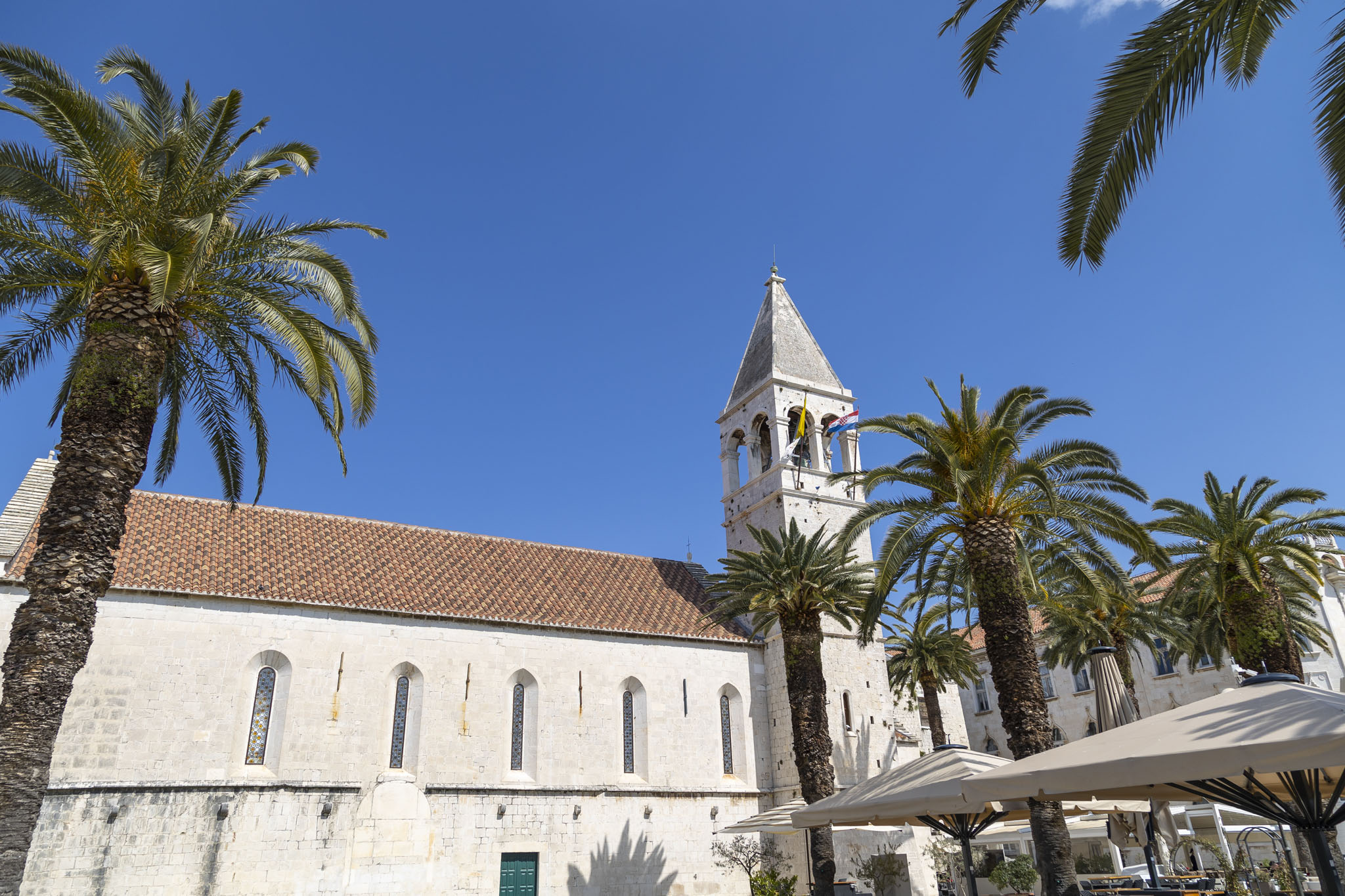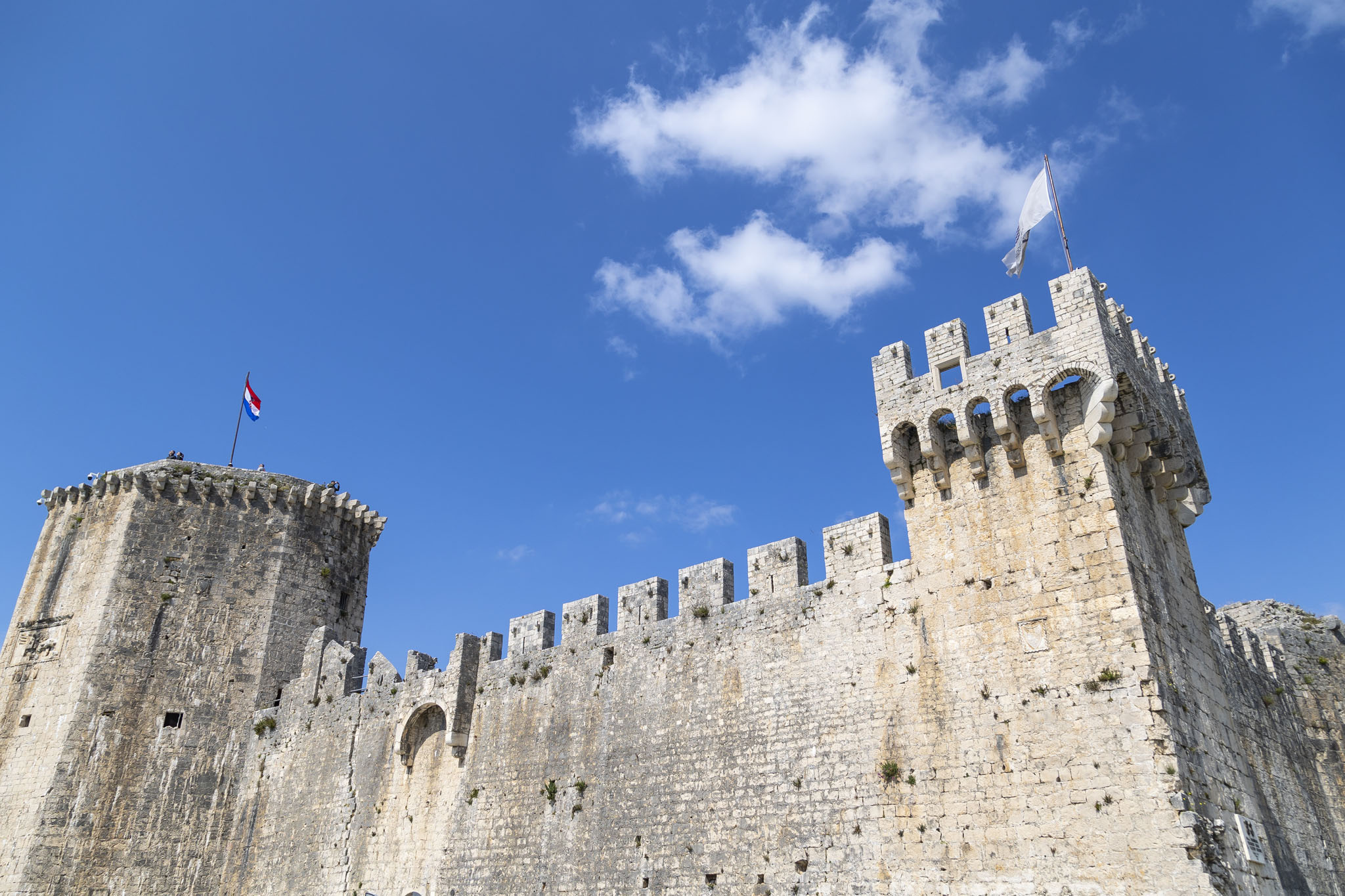A cruise excursion will often include a bit of free time to explore, pick up souvenirs, maybe buy a coffee, that sort of thing, but it’s rarely enough and that was definitely the case during our organised tour with P&O Cruises and the part of the day’s trip that saw us in the fabulously picturesque, historic, UNESCO World Heritage Site of Trogir, Croatia.
We’d been taken to the cathedral and treated to some traditional singing in the loggia by the town square in Trogir so if you’ve not seen the photos video or read that, or if you want to read a little about the history of Trogir and its eclectic mix of architecture then you can check that out here: P&O Cruises Excursion In Split, Croatia: Trogir And Cathedral.
But for this post, a very short walk to the southern part of the small island on which Trogir sits in the Adriatic and a wander towards Kamerlengo Castle – but not in it, sadly – with some pictures of this delightful Croatian town on a bright, sunny day for you to feast your eyes upon.
We emerged at the waterfront area between the Church and Monastery of St Dominic and the Petar Berislavić elementary school. The church dates from the thirteenth century with portions added to it through to the fifteenth century, but it required renovation in more recent times to repair damage suffered during the Second World War. The school’s architecture is arguably more interesting, showing off the Venetian Gothic style with its clear influence from Islamic architecture reflecting the trading history between the different cultures.
Kamerlengo Castle also dates from the Venetian rule period of Trogir. A fourteenth century tower on the spot was extended in the following century with walls and more towers to form the fortifications we see today. The purpose was to protect against attacks from the Ottomans but there’s no record of it ever being needed. A tale associated with the fortress associates the name with that of a governor who fell in love with a woman from Trogir but was not permitted to marry her. The woman died of grief and the governor’s wife gave birth to a girl who resembled the woman he’d loved, but she also died young and his wife left him. He then never spoke again. I didn’t say it was a happy tale.
Trogir-born Augustin Kažotić, bishop of Zagreb in the early fourteenth century, gets himself a statue in the town.
As our visit to Trogir took place close to Easter it wasn’t too surprising to see some reference to it in the form of large, colourful eggs.
As we left the small island on which Trogir was located and headed across the bridge back towards the car park we passed a sculpture to fallen soldiers in wars.
That concluded our short look around Trogir and it was a charming place indeed, and easy to see why it’s a popular spot for locals and visitors from farther afield alike. In the next post in this cruise travelogue series our day’s excursion will head back towards Split with a stop at a former mill called Mlinice Pantan for lunch.































